
Wondering what are the Fast-Growing Shrubs and Bushes for Privacy? Trees and shrubs are an essential part of landscaping, providing both beauty and privacy. But not all trees and shrubs have the same growth rate. Some are fast-growing, while others may take years to reach their full potential.
If you’re looking for a fast-growing tree or shrub that will create shade or serve as a screen for neighbours, this blog post is for you! We’ve compiled a list of 15 of the fastest growing trees and shrubs, complete with facts about each one and stunning pictures to help you decide which one is right for your yard.
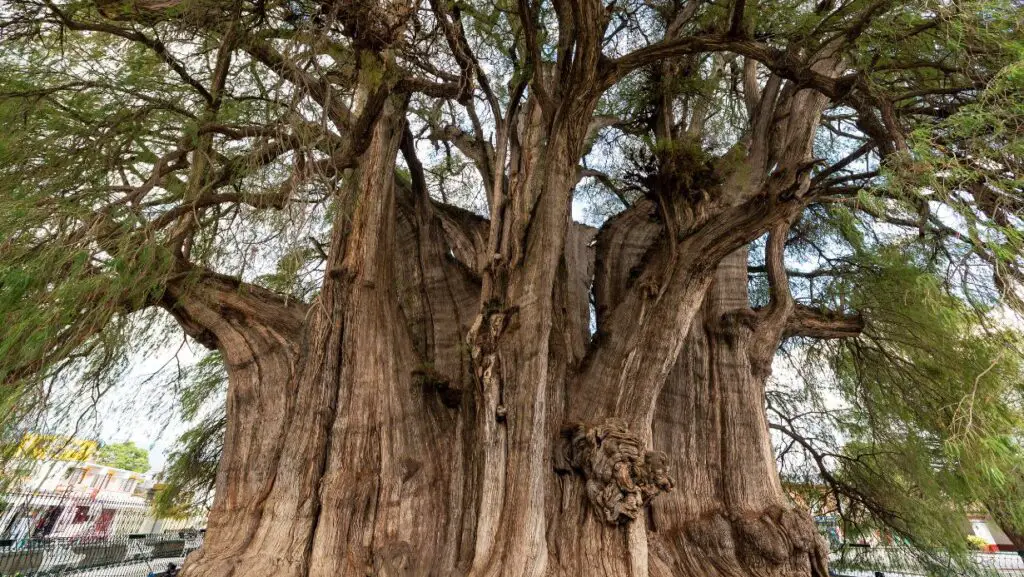
Thuja Green Giant Tree
Thuja Green Giant is a fast-growing evergreen tree that can grow up to 3 feet annually. It is a popular choice for privacy hedges and windbreaks. The Thuja Green Giant is a disease- and insect-resistant and can tolerate various soil conditions.
This tree is easy to maintain, requiring only occasional pruning. It has a pyramidal shape, with bright green foliage that turns yellow-green in the winter. The Thuja Green Giant can reach heights of up to 50 feet and spreads up to 25 feet wide.
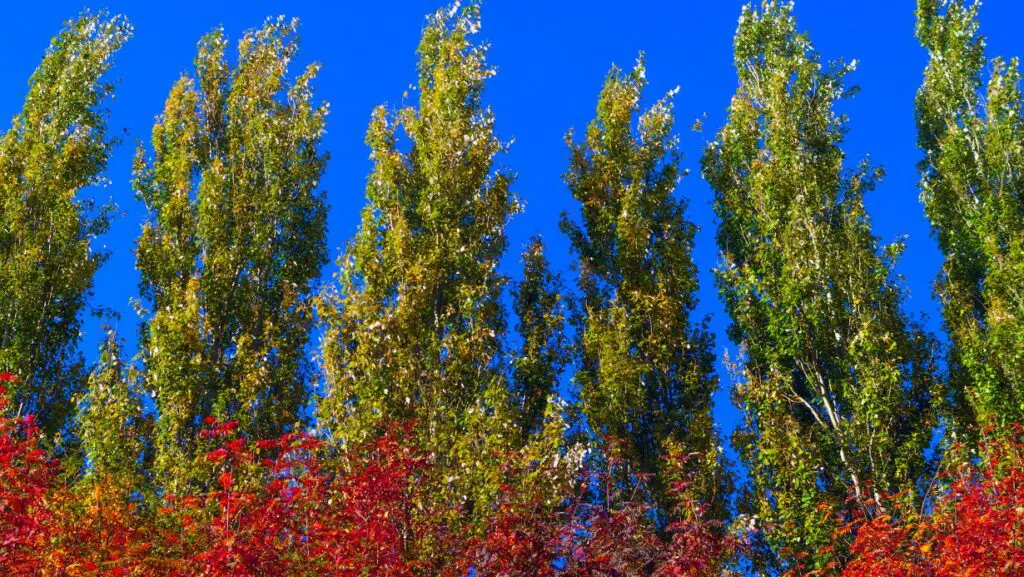
Lombardy Poplar Tree
The Lombardy Poplar is a fast-growing tree that can reach up to 10 feet per year. It is a popular choice for privacy hedges and screens. The tree is tolerant of most soils and prefers full sun. It is also drought-tolerant once established.
The tree has a pyramidal shape and can reach heights of up to 70 feet with a spread of 30 feet. The bark is brownish-gray in color and the leaves are a bright green during the summer months. The leaves turn yellow in fall before dropping off for winter.
The Lombardy Poplar is moderately resistant to pests and diseases but may suffer from some issues if it is not properly cared for. It should be pruned regularly to maintain its shape and size.
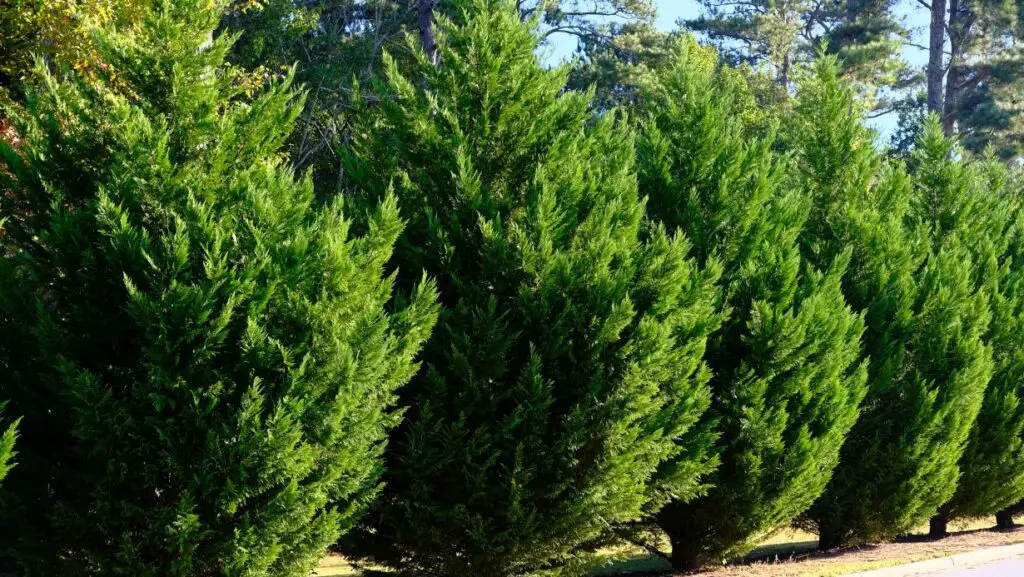
Leyland Cypress Tree
If you’re looking for a fast-growing tree, the Leyland cypress is a great option. This tree can grow up to 3 feet per year, making it one of the fastest-growing trees in the world. The Leyland cypress is also relatively drought-tolerant, so it’s a good choice for areas that don’t get a lot of rainfall.
This tree does best in full sun and well-drained soil. It’s relatively low-maintenance, but you may need to prune it occasionally to control its size. The Leyland cypress can reach heights of up to 60 feet, so make sure you have enough space for this tree before you plant it.
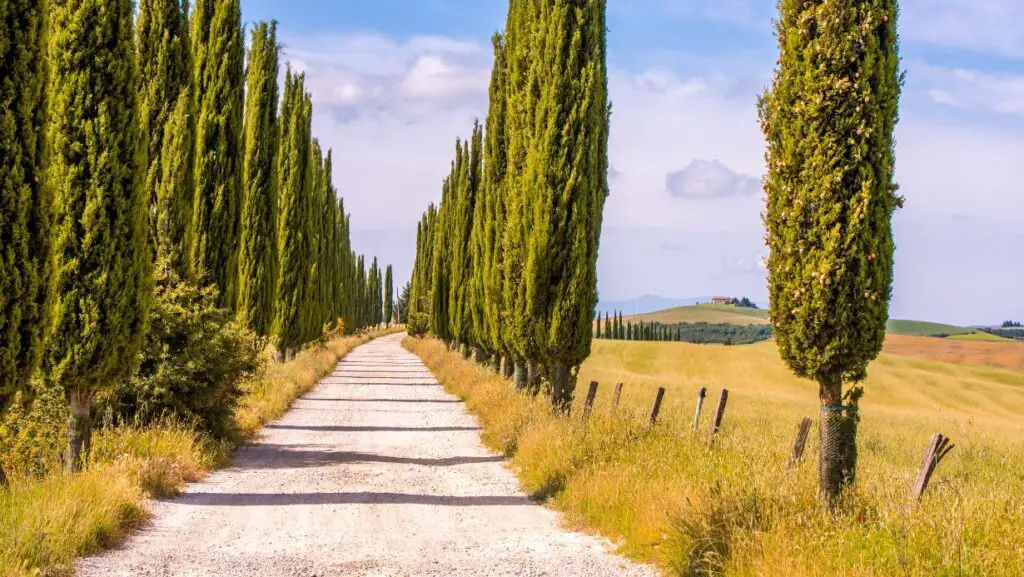
Italian Cypress Tree
Italian cypress trees are one of the fastest growing trees and shrubs. They can grow up to 3 feet per year and can reach a height of 40 feet in just 10 years.
Italian cypress trees are native to the Mediterranean region and are often used as hedges or privacy screens. These evergreen trees have dark green needles and can tolerate hot, dry conditions.
The Arizona Cypress tree, scientifically known as Cupressus arizonica, is a majestic evergreen tree native to the southwestern United States, particularly Arizona, New Mexico, and parts of Mexico. It is characterized by its tall stature, reaching heights of up to 50 feet (15 meters), and its slender, columnar shape.
The tree features feathery blue-green foliage that emits a pleasant aroma when crushed. Arizona Cypress trees are well-adapted to arid and semi-arid environments, making them resilient and drought-tolerant. They are often planted for their ornamental value, serving as beautiful additions to landscapes and providing habitat for wildlife.
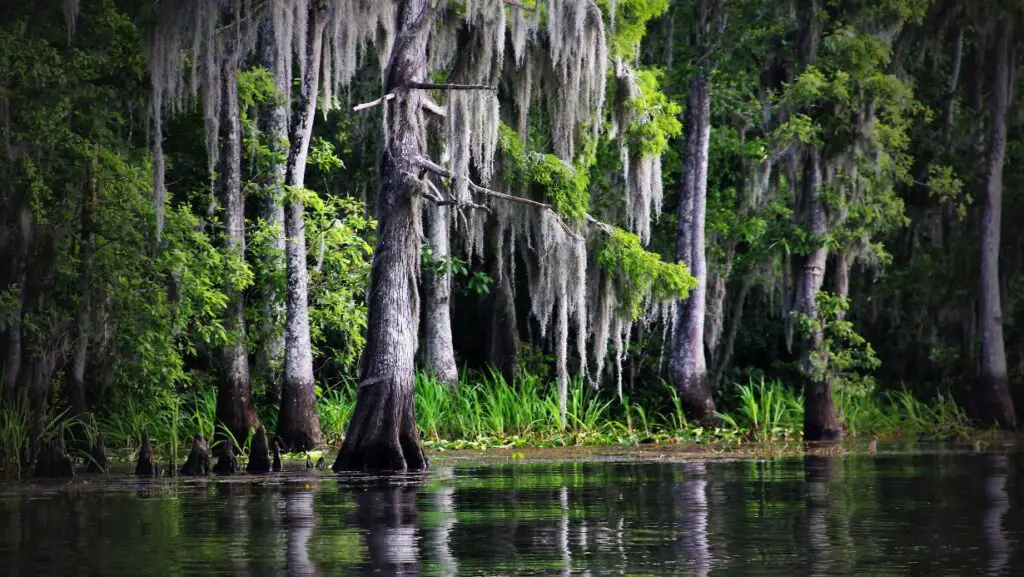
Arizona Cypress Tree
If you’re looking for a fast-growing tree with a striking appearance, the Arizona Cypress is a great option. This tree can grow up to 3 feet per year, reaching a height of 40-60 feet at maturity.
The Arizona Cypress has blue-green needles and a conical shape that makes it a beautiful addition to any landscape. This tree is also drought-tolerant and can thrive in a variety of soil types.
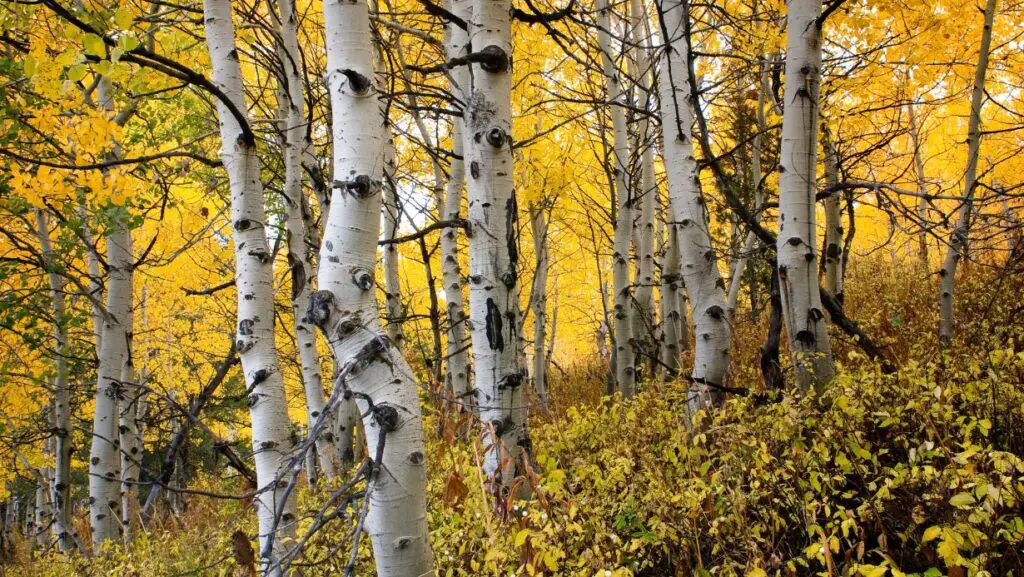
Quaking Aspen Tree
The Quaking Aspen (Populus tremuloides) is one of the most widely distributed trees in North America. It is a deciduous tree that gets its name from the way its leaves quiver in the wind. The Quaking Aspen is the State Tree of Utah.
The Quaking Aspen grows to a height of 50-70 feet and a width of 20-40 feet. It has a shallow root system that makes it vulnerable to being uprooted by strong winds. The bark is smooth and white with black stripes. The leaves are triangular shaped and turn yellow in the fall. The flowers are small and greenish-white, growing in clusters. The fruit is a small capsule that contains seeds that are dispersed by the wind.
The Quaking Aspen grows best in moist, well-drained soils, but it can also grow in dry, rocky soils. It prefers full sun but can tolerate partial shade. It is resistant to drought, fire, and insect damage.
The Quaking Aspen is an important food source for many animals, including deer, elk, beaver, porcupines, and mice. The tree is also used by humans for lumber, pulpwood, fuelwood, and ornamental plantings.
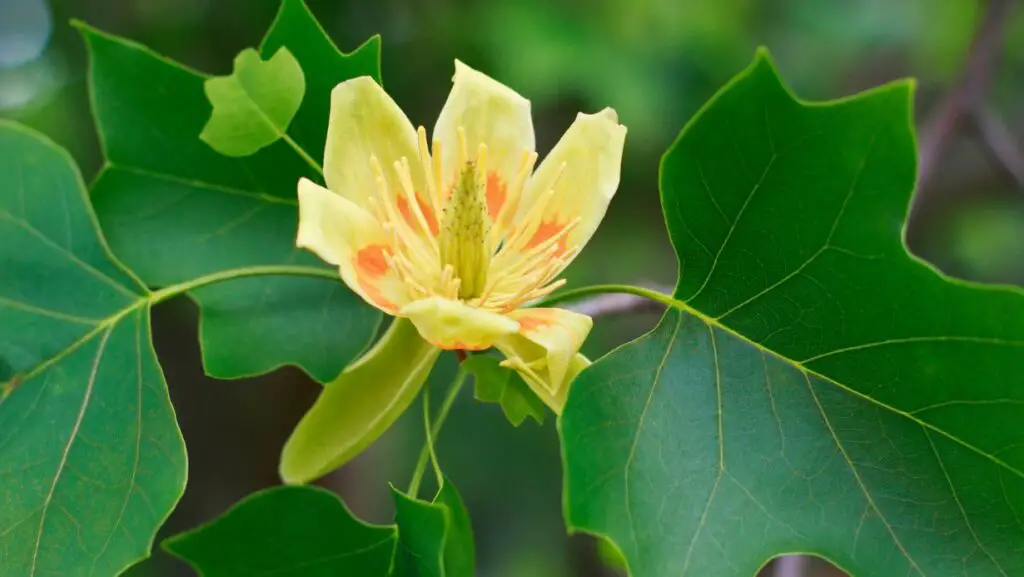
Tulip Poplar Tree
The tulip poplar tree is one of the fastest growing trees in North America. It can grow up to 3 feet per year and can reach a height of over 100 feet. The tulip poplar is a deciduous tree that is native to the eastern United States.
It has large, bright green leaves that are shaped like tulips. The flowers are yellow and bloom in the spring. The tulip poplar is a popular choice for landscaping because of its fast growth rate and its beautiful appearance.

Weeping Willow Tree
The weeping willow tree is one of the most popular trees for landscaping. It is a deciduous tree that can grow to be 20-30 feet tall and wide. The leaves of the weeping willow tree are long and slender, and the branches hang down to give the tree a weeping appearance. The bark is thin and smooth, and the branches are flexible, making them ideal for weaving.
Weeping willow trees are fast-growing trees; they can grow up to 3 feet per year. They are relatively easy to care for and do not require much pruning. Weeping willow trees prefer full sun but can tolerate partial shade.
They like moist soil but can also tolerate dry conditions. Weeping willows are susceptible to several pests and diseases, so it is important to choose a healthy tree when planting one in your landscape.
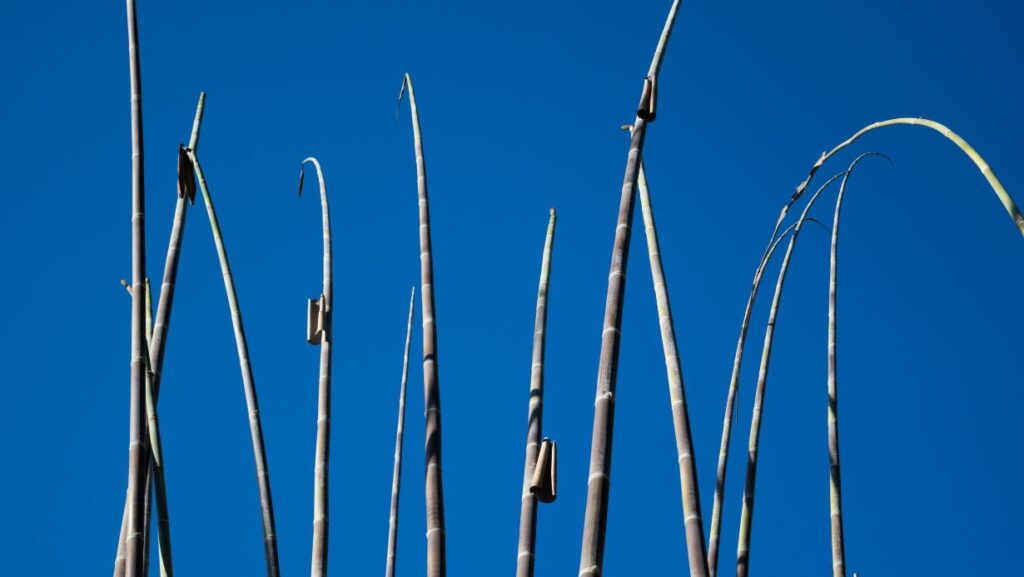
Black Bamboo Tree
Black bamboo is one of the fastest growing plants in the world. It can grow up to 1 meter (3.3 feet) per day. The average black bamboo grows to about 30 meters (100 feet) tall. Black bamboo is native to Asia, specifically China and Japan.
Black bamboo has many uses. It is often used in construction, as it is very strong and flexible. Bamboo charcoal can be made from wood and is a popular fuel source in many parts of Asia. The leaves are also edible and are sometimes used as wrappers for rice balls or other food items.

Cleveland Pear Tree
The Cleveland pear tree is a fast-growing tree that can reach a height of up to 40 feet. This tree is native to the North.
America and can be found in the eastern United States. The Cleveland pear tree is a popular choice for landscaping because it has a beautiful shape and produces white flowers in the spring. The fruit of this tree is edible but not very tasty.
The Cleveland pear tree is a hybrid between two other species of pear trees, the Callery Pear and the Bradford Pear. This hybrid was first introduced in 1966 by the United States Department of Agriculture as an ornamental, but it has since gained popularity among landscapers due to its attractive shape and white flowers. The tree is known to have disease resistance and is hardy in most climates.
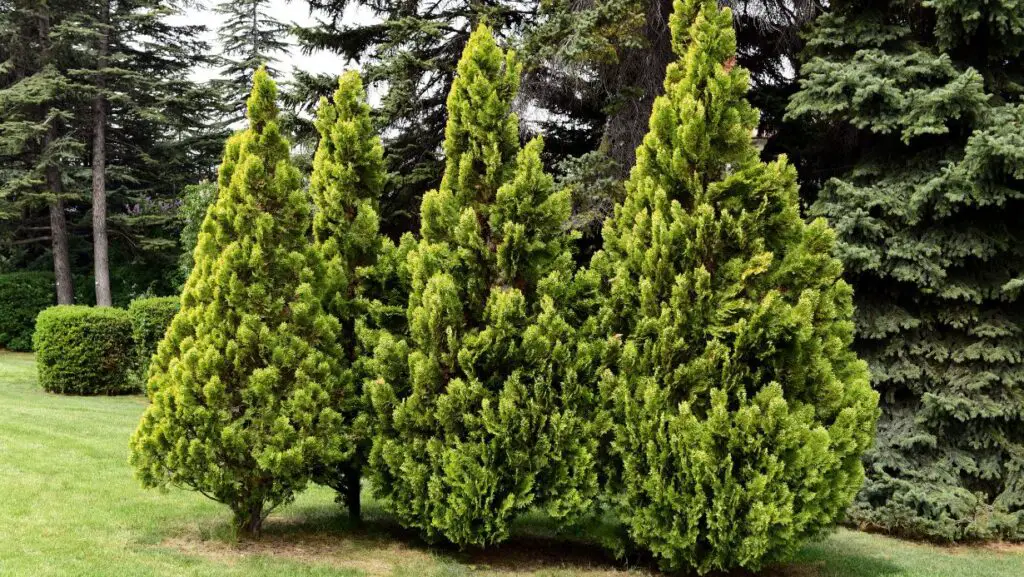
Baby Giant Arborvitae Tree
One of the great things about arborvitae trees is that they are very forgiving. If you plant them in the wrong spot, they will still do just fine.
They are also one of the best choices for a privacy hedge because they can get quite tall and dense. The ‘Green Giant’ is a popular cultivar that can grow up to 3 feet per year and get as tall as 100 feet!
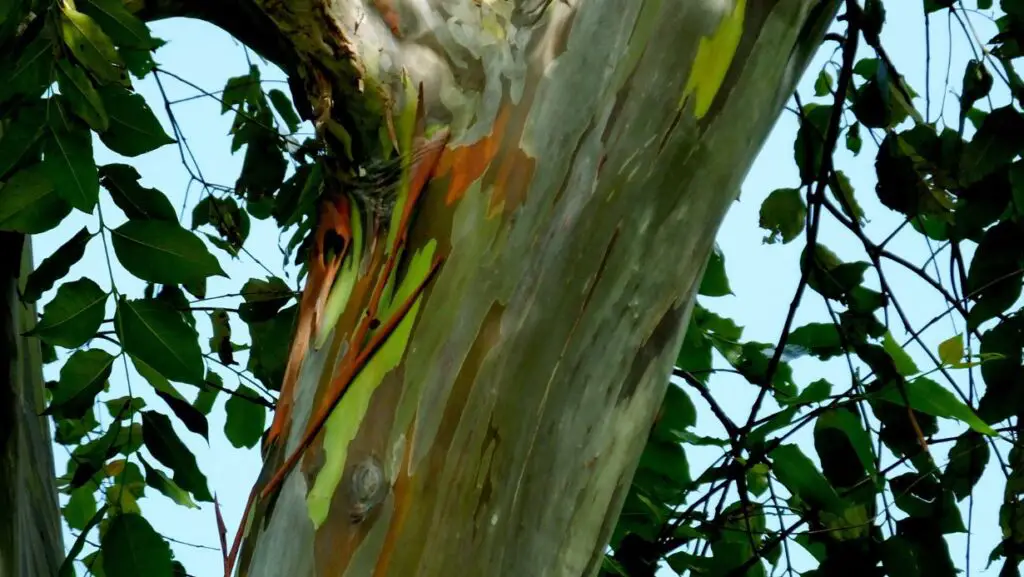
Rainbow Eucalyptus Tree
Eucalyptus deglupta, also known as the rainbow eucalyptus, is a tall tree found in the Philippines. The bark of this tree is regularly shed in strips, revealing a bright green inner layer that gradually darkens to blue, purple, orange, and red. As the outer layers of bark peel away, they leave behind a multi-colored trunk that is truly stunning to behold.
The rainbow eucalyptus is one of the fastest-growing trees in the world, adding up to 3 feet (1 m) of growth each year. This quick growth rate makes it an ideal choice for use as a windbreak or shade tree. Its wood is also quite strong and durable, making it suitable for use in construction.
Despite its name, the rainbow eucalyptus is not actually a member of the eucalyptus family. It is instead related to Myrtle and Clove trees. If you’re looking for a fast-growing tree that will add some serious wow factor to your landscape, the rainbow eucalyptus is definitely worth considering!
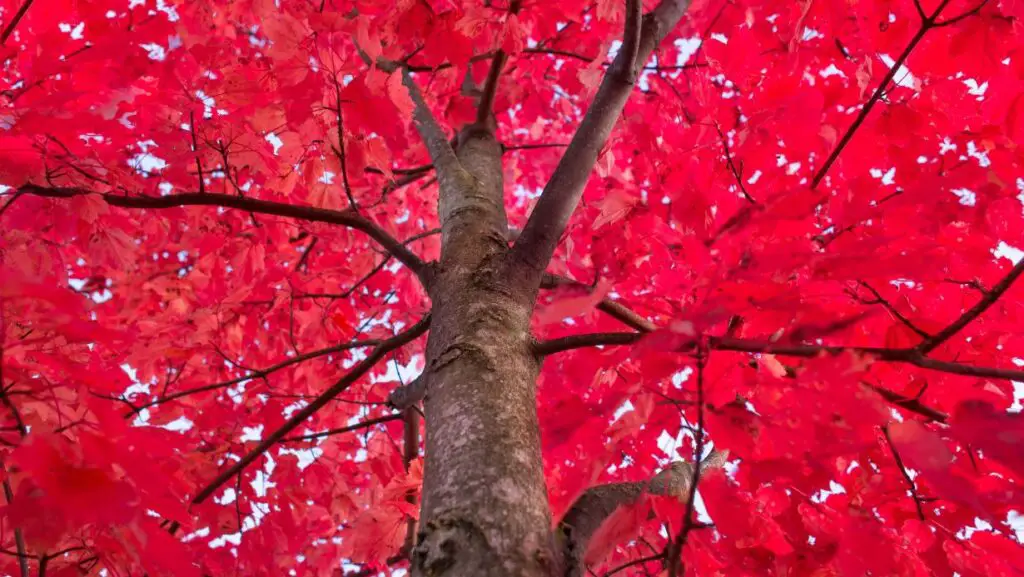
Autumn Blaze Red Maple Tree
One of the most beautiful trees you can plant in your yard is the Autumn Blaze Red Maple. Its name comes from its stunning red leaves that appear in the fall. But, this tree is more than just a pretty face. It’s also one of the fastest growing trees, adding 2-3 feet per year!
The Autumn Blaze Red Maple is a hybrid of red maple and silver maple, so it has the best of both worlds. It’s a hardy tree that can withstand cold winters and hot summers. And, it’s relatively pest and disease-resistant.
If you’re looking for a fast-growing tree that will add some serious curb appeal to your home, look no further than the Autumn Blaze Red Maple!

Mexican Fan Palm Tree
The Mexican Fan Palm tree is one of the fastest-growing trees in the world. It can grow up to 5 feet in a year and can reach a height of 50 feet in just 10 years. The Mexican Fan Palm is native to Mexico and Central America and is one of the most popular palm trees in the world.
The Mexican Fan Palm tree has a long, slender trunk with a crown of bright green, feather-like leaves. The leaves can grow up to 12 feet long and are used for making palm fronds, which are used in thatching roofs and making baskets.
The Mexican Fan Palm tree produces small, yellowish-white flowers that bloom in the summer. The fruit of the Mexican Fan Palm tree is a small, black drupe that is eaten by birds and animals.
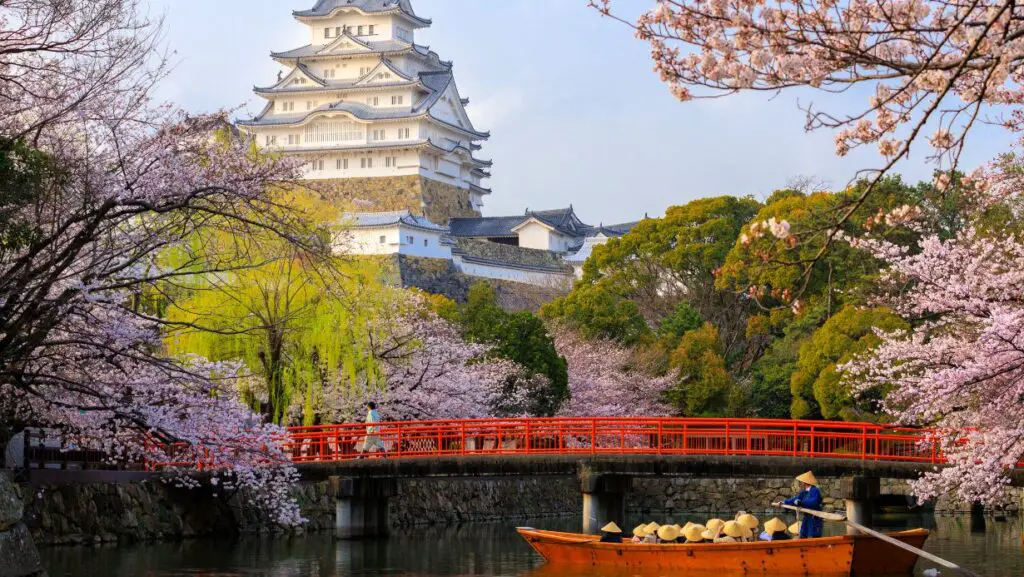
Heritage River Birch Tree
Heritage river birch trees are one of the fastest-growing trees and shrubs. They can grow up to 3 feet per year and can reach a height of 50 feet. The leaves are dark green and the bark is brownish-red. The flowers are small and yellow, and they bloom in the spring.
The Heritage river birch is a drought-tolerant tree, and it can withstand both flooding and dry soils. It prefers moist, acidic soil and full sun to partial shade. It also tolerates air pollution and is often planted as a street tree.
The Heritage river birch is resistant to many diseases and pests, making it a great choice for landscaping purposes.

Japanese Cedar Tree
Japanese cedar trees are some of the fastest-growing trees in existence. They are known to grow up to 24 inches per year, which is incredibly fast for a tree. Japanese cedars are native to Japan and can live for hundreds of years. The oldest recorded Japanese cedar tree is over 1,000 years old!
Japanese cedar trees are relatively easy to care for. They prefer full sun but can tolerate some shade. They need well-drained soil and should be watered regularly. Fertilize your Japanese cedar tree every spring to help it grow even faster.
If you’re looking for a fast-growing tree that will add beauty and value to your home, a Japanese cedar tree is a great choice.
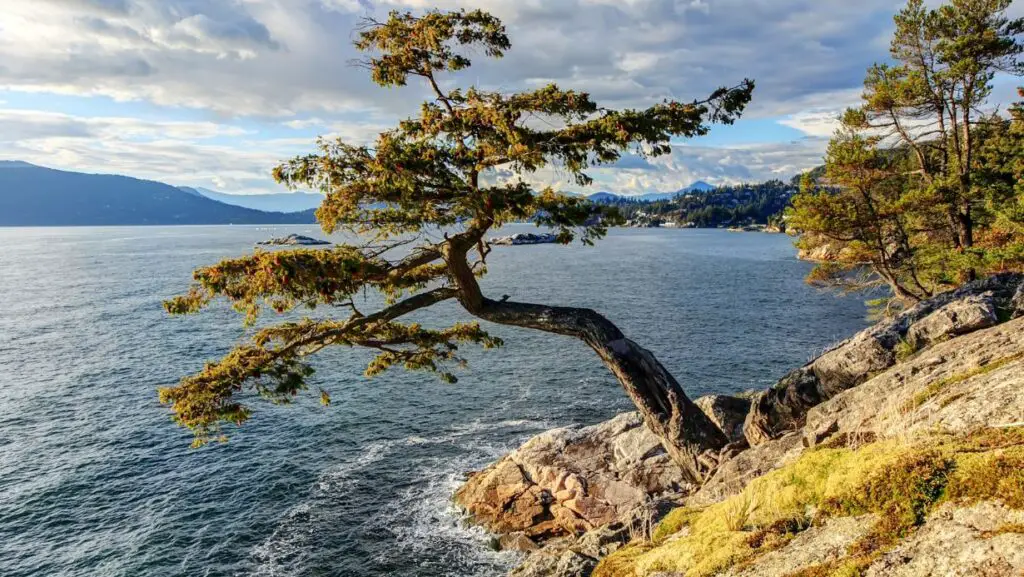
Blue Point Juniper
The Blue Point Juniper is a fast-growing, evergreen tree that can reach up to 40 feet in height. It has a dense, rounded canopy and blue-green needles that give it its name.
This tree is adaptable to a variety of soil types and prefers full sun. It is low-maintenance and drought-tolerant once established.
The Blue Point Juniper (Juniperus chinensis ‘Blue Point’) is a stunning evergreen tree that brings beauty and elegance to any landscape. With its vibrant blue-green foliage and graceful form, this tree serves as an excellent focal point or an attractive addition to hedges and borders. In this article, we will explore the characteristics and benefits of the Blue Point Juniper, making it a popular choice among homeowners and landscape enthusiasts.
The Blue Point Juniper is known for its dense, pyramidal shape and compact growth habit. It typically reaches a mature height of 10 to 15 feet, with a spread of 4 to 6 feet, making it suitable for smaller spaces or as a privacy screen. The foliage consists of fine-textured, needle-like leaves that display a striking blue-green color throughout the year. This vibrant color adds visual interest and contrasts beautifully with other plants in the landscape.
In addition to its aesthetic appeal, the Blue Point Juniper offers practical benefits as well. Its dense growth habit and thick foliage provide year-round privacy when used as a hedge or screen. The tree’s sturdy branches also make it an ideal choice for windbreaks, helping to protect your garden or outdoor living spaces from strong winds.
Maintenance of the Blue Point Juniper is relatively low, making it an attractive option for homeowners with busy schedules. It is a hardy tree that requires minimal pruning, typically limited to removing any dead or damaged branches. This evergreen variety does not produce messy fruits or significant litter, making it a clean and hassle-free addition to your landscape.
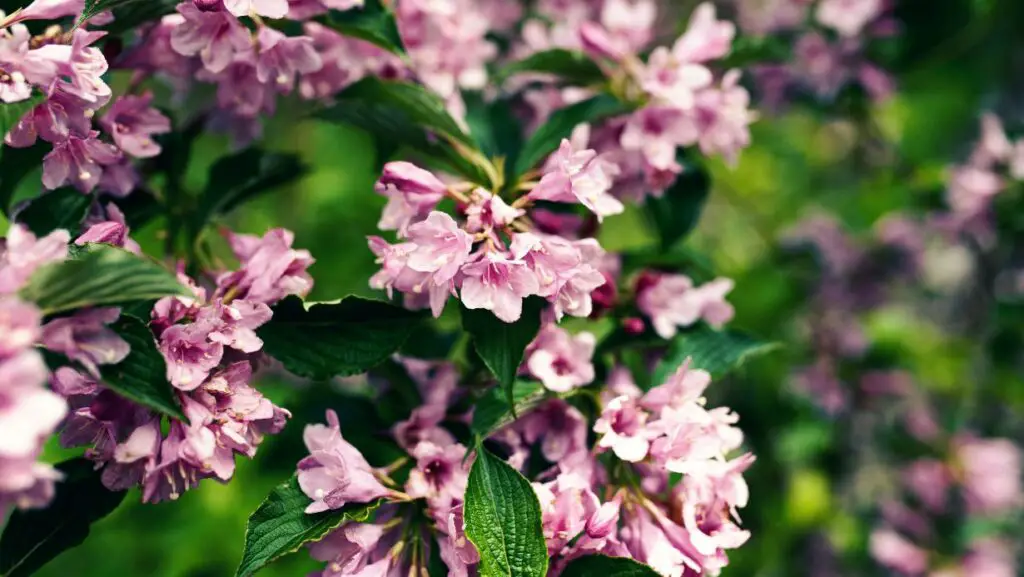
Weigela Florida Tree
This deciduous shrub is native to Korea and China, and it grows best in full sun to partial shade. It can reach heights of up to 10 feet tall and 12 feet wide, and it blooms in May and June with pink or white flowers.
Weigela florida, commonly known as Weigela or Weigela shrub, is a deciduous flowering tree that adds a touch of elegance and beauty to any garden or landscape. Native to East Asia, particularly China and Korea, this ornamental tree is highly valued for its vibrant flowers, attractive foliage, and easy maintenance. With its showy blooms and graceful form, Weigela florida is a popular choice among gardeners and landscaping enthusiasts.
The Weigela florida tree typically grows to a height of 6 to 10 feet, with a spread of 6 to 12 feet. It features oval-shaped leaves that are deep green in color, providing a lovely backdrop for the stunning flowers. The trumpet-shaped blooms appear in late spring or early summer and come in various shades of pink, red, or white, depending on the cultivar. These blossoms attract pollinators, such as butterflies and hummingbirds, making Weigela florida a delightful addition to wildlife-friendly gardens.
One of the notable characteristics of Weigela florida is its ability to thrive in a wide range of soil conditions, as long as it is well-drained. It prefers full sun to partial shade, and regular watering during dry periods promotes healthy growth and abundant flowering. Pruning after the blooming period helps maintain the tree’s shape and encourages new growth for the following year.
Whether used as a standalone specimen tree, a border plant, or a foundation planting, Weigela florida adds a touch of charm and color to any landscape. Its versatility and low maintenance requirements make it an excellent choice for both novice and experienced gardeners. So, consider adding a Weigela florida tree to your garden and enjoy its vibrant blooms and graceful presence throughout the growing season.
How to Keep Evergreen Trees Healthy?
To keep evergreen trees healthy, providing them with the proper amount of water and fertilizer is important. It is also important to protect them from pests and diseases.
Watering: Evergreen trees need 1”-2” of water per week. Water deeply so that the water penetrates the root zone. Mulch around the tree to help retain moisture.
Fertilizing: Fertilize evergreen trees in early spring before new growth begins. Use a slow-release fertilizer formulated for evergreens. Apply according to package directions.
Prune: Prune evergreen trees in late winter or early spring when the tree is dormant. Remove dead branches and thin out overcrowded canopies to increase air circulation.
Mulch: Mulching around the base of evergreen trees helps retain moisture and keeps weeds down. Use organic mulch such as wood chips, shredded bark, or pine needles.
Pests and Diseases: Inspect evergreen trees regularly for signs of pests or diseases. If you see any, take action immediately to treat the problem.
How to Plant and Grow Trees and Shrubs?
In order to plant and grow trees and shrubs, it is important first to choose the right location. The location should be well-lit and have good drainage. Choosing a tree or shrub that is appropriate for the climate is also important.
Once you have chosen the location and tree or shrub, you must prepare the soil. The soil should be loose and free of debris. If the soil is too dense, it can compact and suffocate the tree or shrub’s roots.
After preparing the soil, you must dig a hole twice as wide as the root ball of the tree or shrub. This will give the roots room to spread out and establish themselves. Gently place the tree or shrub in the hole and fill it with soil. Water thoroughly.
It is important to water regularly, especially during dry periods. Trees and shrubs need deep watering so that the water reaches down to the roots. A soaker hose or drip irrigation system can help ensure your trees and shrubs get enough water without being overwatered.
Fertilizing your trees and shrubs is also important for healthy growth. Choose a fertilizer that is specifically designed for trees and shrubs. Follow the directions on the package for proper application rates and timing.
Mulching around your trees and shrubs helps retain moisture in the soil, prevents weed growth, and adds nutrients to the
The Benefits of Trees and Shrubs
When it comes to finding the best trees and shrubs for your home, there are many factors to consider. But one of the most important is how fast they grow. After all, who wants to wait years for their trees and shrubs to mature?
Luckily, plenty of fast-growing trees and shrubs can provide you with all the benefits of a mature tree or shrub in a fraction of the time. Here are just a few of the benefits you can expect from planting fast-growing trees and shrubs:
1. Quick Coverage
If you want to add some privacy to your yard or block out an unsightly view, fast-growing trees and shrubs are perfect. They’ll quickly fill in any areas you want to be covered, providing you with the privacy you desire in no time at all.
2. Enhanced Property Value
Well-landscaped homes typically sell for more than those without any landscaping. So, if you’re looking to boost your home’s value, planting some fast-growing trees and shrubs is a great way to do it. Not only will they make your home more attractive to potential buyers, but they can also increase its curb appeal, which is always a plus.
3. Erosion Control
Trees and shrubs help hold soil in place, making them ideal for slopes and other areas prone to erosion. Planting fast-growing trees and shrubs can help prevent soil erosion and keep your property looking its best.
4. Energy Savings
Trees and shrubs provide shade in the summer and protection from wind in the winter. This can help reduce your cooling and heating costs significantly, saving you considerable money over time.
5. Increased Beauty
One of the main reasons people plant trees and shrubs is their beauty. Fast-growing trees and shrubs provide an instant boost to any landscape, making them a great way to spruce up a dull yard in no time.
Conclusion
All of the trees and shrubs discussed in this article are some of the fastest growing plants available on the market. These fast-growing trees and shrubs can range from small ornamental trees for your garden to large shade trees for privacy around your property.
We’ve provided you with key facts about each plant so that you can make an informed decision when selecting a tree or shrub for your lawn. With proper care, these plants will thrive in their environment making them great additions to any landscape.
